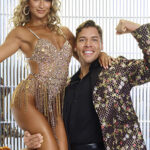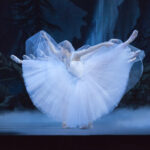Kevin Costner’s directorial debut, Dancing With Wolves, arrived in 1990 amidst a storm of skepticism. Critics sharpened their knives, ready to dissect what many predicted would be a cinematic catastrophe, another “Heaven’s Gate” for a new decade. An epic Western in a modern era? Production delays, budget concerns that forced Costner to invest his own money, and whispers of on-set challenges painted a grim picture. The film, partially subtitled and lengthy, seemed destined to be “Kevin’s Gate,” a monument to directorial hubris.
Yet, Dancing With Wolves defied all expectations. It wasn’t just a success; it was a phenomenon. Globally, the film amassed a staggering $424 million in box office revenue, a figure that explodes when home video sales are considered. The ultimate vindication came at the Academy Awards, where Dancing With Wolves swept the board with 7 Oscars, including Best Picture, the first Western to claim the top prize in nearly sixty years since “Cimarron” in 1931, and Best Director for Costner himself. Nominations poured in for acting, recognizing Costner, Graham Greene, and Mary McDonnell. It was a resounding triumph – artistic, commercial, and deeply personal for Costner, who undoubtedly savored the sweet taste of success after facing such widespread doubt.
At its heart, Dancing With Wolves, the name bestowed upon Lieutenant Dunbar by the Lakota Sioux, is a simple narrative. However, it is the masterful storytelling that elevates it to an enchanting and enduring Western classic. This cinematic gem possesses all the essential elements of a first-rate “oater.” While the plot may be straightforward, it’s richly layered with detail, populated by characters of genuine depth, and maintains a captivating pace even in its extended 236-minute director’s cut. Credit must be given to Costner, who, in his directorial debut, orchestrates these elements with the skill of a seasoned master of the genre. Each narrative thread is thoughtfully explored, contributing to a tapestry woven with wistfulness, romance, and a touch of elegiac beauty. The action sequences are expertly staged, with the buffalo hunt standing out as a breathtaking spectacle. Employing practical effects and real animals, with only minimal animatronics for close-ups, the film grounds its action in reality, much like its portrayal of the Lakota Sioux, authentically played by Native American actors. The film’s humor is also noteworthy, organically arising from character interactions and enhancing the burgeoning friendships depicted.
No great Western is complete without stunning visuals and a memorable score, and Dancing With Wolves excels in both. Cinematographer Dean Semler and composer John Barry both rightfully earned Oscars for their contributions. Filmed primarily in the stunning landscapes of South Dakota, around the Black Hills and Badlands, Semler’s lens captures the raw beauty of the frontier, making it almost a character in itself. His framing powerfully conveys the environment, often surpassing words. Barry’s score, while subtly echoing “A View To A Kill” at times, is undeniably grand and emotionally resonant. The main theme is delicate and moving, while the music for action scenes like the buffalo hunt and Pawnee attacks is thrillingly dynamic. The acting performances are equally praiseworthy. Costner, Greene, and McDonnell’s Oscar-nominated performances are understated yet powerful, embodying the spirit of the story with a sincerity often absent in epic films. McDonnell, as Stands With A Fist, a white woman raised by the Sioux, delivers a nuanced and emotionally rich performance, navigating the complexities of her character’s identity. While Rodney A. Grant wasn’t nominated, his portrayal of Wind In His Hair is equally impactful, particularly in his evolving relationship with Dunbar.
While some historical inaccuracies may irk purists, and the central romance, though tender, could be considered somewhat underdeveloped (though improved in the director’s cut), these are minor quibbles in the face of such a visionary and ambitious cinematic achievement. Dancing With Wolves is meticulously crafted, demonstrating a deep respect for Western traditions while offering a profound message of cross-cultural understanding and human connection. It is a film for those who appreciate character-driven stories and celebrates the beauty of human relationships. It’s a film that feels like a gift from the golden age of Westerns, a timeless classic that deserves its place in cinematic history. A definitive 10/10.


